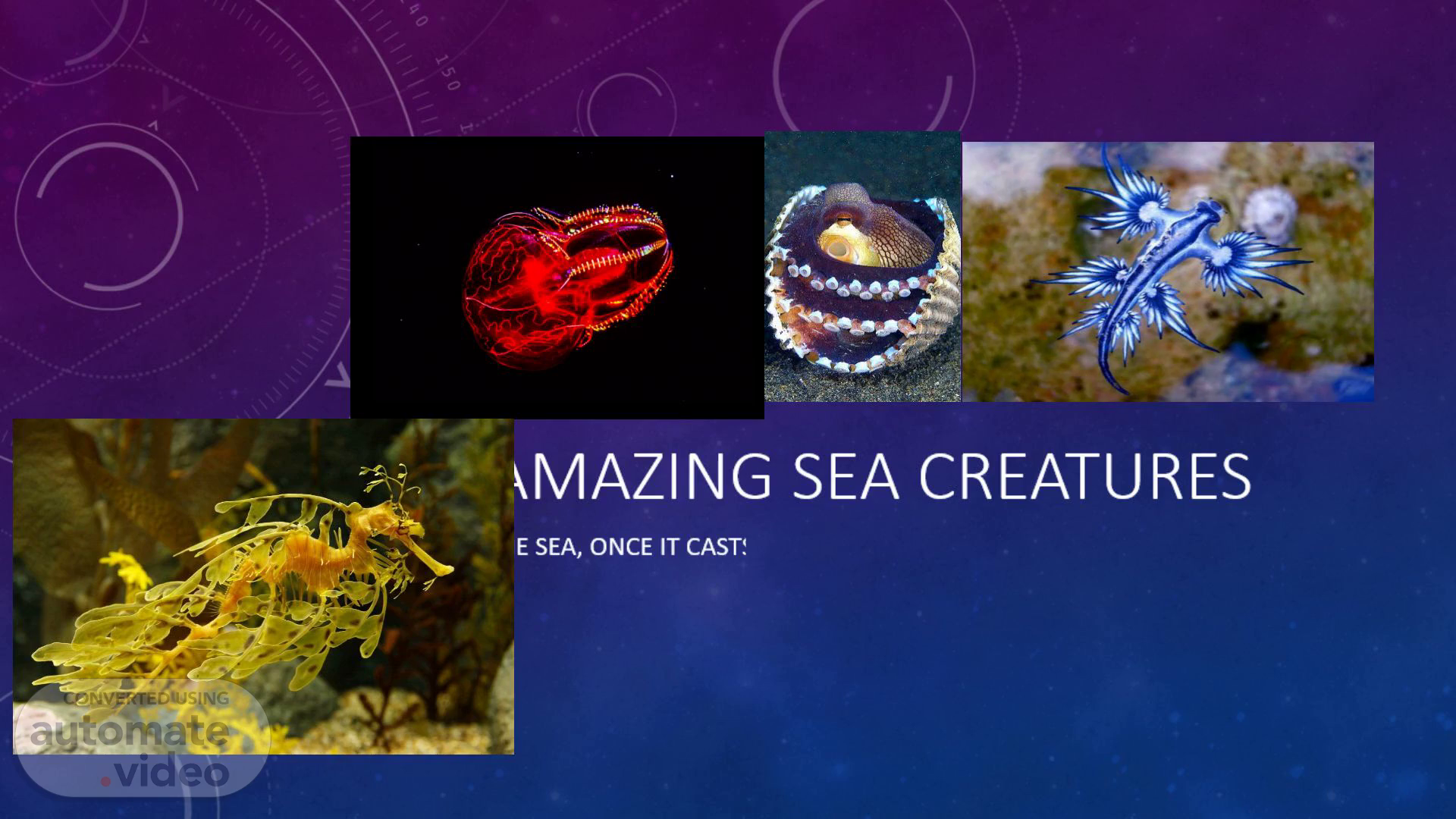Scene 1 (0s)
Amazing sea creatures. The sea, once it casts its spell, holds one in its net of wonder forever. By Jyotirmay Amarnath Patra.
Scene 2 (17s)
[Audio] We are thrilled to present our presentation on the Bloody-belly comb jelly. Today, we will be discussing this remarkable creature and its distinctive features. The Bloody-belly comb jelly is a member of the Eukaryota Phylum: Ctenophora Family: Lampoctenidae. It belongs to the Kingdom: Animalia and orders: Lobata. Ironically, at the depths where the Bloody-belly lives, it's nearly invisible to predators. In the darkness of the deep sea, animals that are red appear black and blend into the dark background. Scientists believe the Bloody-belly's red belly helps mask bioluminescent light from the prey it consumes, making it harder for predators to spot it. In fact, a predator with a glowing gut could easily become prey. The genus name Lampocteis derives from the Greek roots for brilliant comb, referring to the bright iridescence diffracted from the animal's comb rows. The Bloody-belly comb jelly is known for its unique features, including its red belly and comb rows that can be up to 10 centimeters long. It is a fascinating creature that provides valuable insights into the adaptations of animals that live in the deep sea. Thank you for joining us on our presentation, Amazing sea creatures. We hope you found this information informative and interesting..
Scene 3 (1m 43s)
[Audio] Glaucus atlanticus is a sea slug that lives in the pelagic zone of the open ocean. These creatures are carried along by the winds and ocean currents, and they use the surface tension of the water to stay afloat. Glaucus atlanticus is a member of the Eukaryota kingdom, Animalia phylum, Mollusca class, Gastropoda order, Nudibranchia suborder, Cladobranchia family, and Glaucidae genus. These sea slugs are known for their unique countershading coloration, which allows them to blend in with their surroundings and avoid detection by predators. However, Glaucus atlanticus also has a defense mechanism in the form of stinging nematocysts that are stored within its own tissues. Common names for this sea slug include the blue sea dragon, sea swallow, blue angel, blue glaucus, dragon slug, blue dragon, blue sea slug, and blue ocean slug. We hope you find this information about Glaucus atlanticus as fascinating as we do, and we look forward to sharing more about amazing sea creatures with you on slide 4..
Scene 4 (2m 43s)
[Audio] We present Amphioctopus marginatus, also known as the coconut octopus and veined octopus. This medium-sized cephalopod is known for its unusual behavior, including bipedal and quadrupedal walking as well as tool use. The octopus gathers coconut shells and seashells and uses these for shelter. The species displays a typical color pattern with dark ramified lines similar to veins, usually with a yellow siphon. Amphioctopus marginatus prefers shallow, subtidal waters along the continental shelf and can be found at a maximum depth of 190 meters (620 ft) in mud and sand substrates..
Scene 5 (3m 28s)
[Audio] We are currently on slide 5 out of 15 in the presentation titled By Jyotirmay Amarnath Patra Amazing sea creatures..
